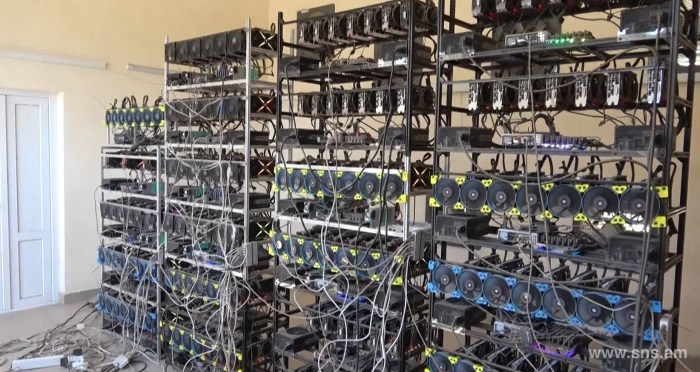Get ready to dive into the world of crypto mining techniques, where we unravel the mysteries behind efficient mining practices. From hardware requirements to energy consumption, we’ve got you covered with all the essential information you need to know. So, buckle up and let’s explore the fascinating realm of crypto mining!
Overview of Crypto Mining Techniques
Cryptocurrency mining is the process of validating transactions on a blockchain network using powerful computers to solve complex mathematical puzzles. Miners compete to solve these puzzles and the first one to do so is rewarded with newly minted coins and transaction fees.
Role of Mining in Cryptocurrency Transactions
Mining plays a crucial role in securing the network and verifying transactions without the need for a central authority. It ensures the integrity and transparency of the blockchain by preventing double-spending and fraud.
- Mining adds new transactions to the blockchain, creating new blocks that are linked together in a chain.
- Miners validate transactions by confirming their authenticity and adding them to the public ledger.
- Through mining, the decentralized nature of cryptocurrencies is maintained, as no single entity controls the entire network.
Importance of Mining Techniques in the Crypto World
The techniques used in cryptocurrency mining are essential for the smooth operation of blockchain networks and the issuance of new coins. Different cryptocurrencies employ various mining algorithms, such as Proof of Work (PoW) or Proof of Stake (PoS), to validate transactions and secure the network.
Mining techniques ensure the decentralization, security, and immutability of blockchain networks, making them resistant to censorship and fraud.
Popular Crypto Mining Algorithms

Cryptocurrency mining relies on various algorithms to validate transactions and secure the network. Each algorithm has its own unique characteristics and requirements, making it essential for miners to choose the right one for their setup.
SHA-256
SHA-256 (Secure Hash Algorithm 256-bit) is widely used in Bitcoin mining. It involves complex mathematical calculations that require high computational power. Miners compete to solve these algorithms to add new blocks to the blockchain and receive rewards.
Scrypt, Crypto mining techniques
Scrypt is used in Litecoin mining and is designed to be memory-intensive rather than processing-intensive like SHA-256. This algorithm is considered more energy-efficient and accessible to miners with lower computational power.
Ethash
Ethash is the algorithm used in Ethereum mining. It is memory-hard, meaning it requires a significant amount of memory to solve the cryptographic puzzles. This helps prevent the centralization of mining power among large mining pools.
X11
X11 is a chained hashing algorithm that uses a sequence of 11 different hashing functions. It is used in Dash mining and aims to provide increased security and energy efficiency compared to other algorithms.
Choosing the Right Algorithm
The choice of mining algorithm can significantly impact a miner’s profitability, energy consumption, and overall success in the mining process. Factors such as hardware capabilities, electricity costs, and network difficulty should all be considered when selecting the most suitable algorithm for mining.
Hardware Requirements for Crypto Mining
To successfully mine cryptocurrencies, miners require specific hardware components that play crucial roles in the mining process. These components include GPUs (Graphics Processing Units), ASICs (Application-Specific Integrated Circuits), and CPUs (Central Processing Units).
GPUs
GPUs are commonly used in crypto mining due to their ability to handle complex mathematical calculations required for mining. They are efficient in processing parallel tasks and are particularly favored for mining cryptocurrencies like Ethereum.
ASICs
ASICs are specialized hardware designed specifically for mining cryptocurrencies. They are highly efficient in performing the hashing algorithms needed for mining, making them popular for mining Bitcoin and other cryptocurrencies with high computational requirements.
CPUs
While CPUs are not as commonly used in crypto mining compared to GPUs and ASICs, they still play a role in certain mining operations. CPUs are more versatile and can be used for mining cryptocurrencies that require less computational power.
Impact of Hardware Efficiency
The efficiency of the hardware used in crypto mining directly impacts the profitability of mining operations. More efficient hardware can mine cryptocurrencies faster and consume less energy, resulting in higher profits for miners. Miners often invest in high-quality hardware to maximize their mining output and stay competitive in the market.
Software Tools for Crypto Mining

When it comes to crypto mining, having the right software tools is crucial for optimizing your mining operations. These software programs are designed to interact with the hardware components of your mining rig to efficiently mine cryptocurrencies.
Examples of Mining Software
- 1. NiceHash: A popular mining software that allows users to mine different cryptocurrencies and automatically switches to the most profitable coin.
- 2. CGMiner: A versatile mining program that supports multiple mining algorithms and is known for its stability and customization options.
- 3. BFGMiner: Another reliable mining software that is compatible with FPGA and ASIC mining hardware, offering advanced features for experienced miners.
Interactions with Hardware Components
Mining software communicates with the hardware components of your mining rig, such as GPUs, CPUs, and ASICs, to perform complex mathematical calculations required for mining cryptocurrencies. The software controls the mining process, manages temperature and power consumption, and ensures optimal mining performance.
Importance of Choosing the Right Software
Choosing the right mining software is essential for maximizing your mining profitability and efficiency. The software you select should be compatible with your hardware, offer good performance, and provide regular updates to stay up-to-date with the latest mining algorithms. Additionally, user-friendly interfaces and reliable customer support are also important factors to consider when choosing mining software.
Energy Consumption and Environmental Impact
Cryptocurrency mining operations consume a significant amount of energy, leading to environmental concerns due to the high levels of energy usage.
Energy Consumption Levels
- Crypto mining operations require a large amount of electricity to power the mining hardware and cooling systems.
- The energy consumption of mining operations can be compared to that of small countries, raising concerns about sustainability.
- As the mining difficulty increases, so does the energy consumption, contributing to the environmental impact.
Environmental Concerns
- The high energy usage of crypto mining operations results in a significant carbon footprint, contributing to climate change.
- Many mining operations rely on fossil fuels for energy, further exacerbating environmental issues.
- Increased electricity consumption can strain local power grids and lead to higher energy costs for residents in the area.
Potential Solutions
- Transitioning to renewable energy sources such as solar or wind power can help reduce the environmental impact of mining operations.
- Implementing energy-efficient mining hardware and cooling systems can lower energy consumption and decrease the carbon footprint.
- Exploring alternative consensus algorithms that require less energy, such as Proof of Stake, can mitigate the environmental impact of mining.